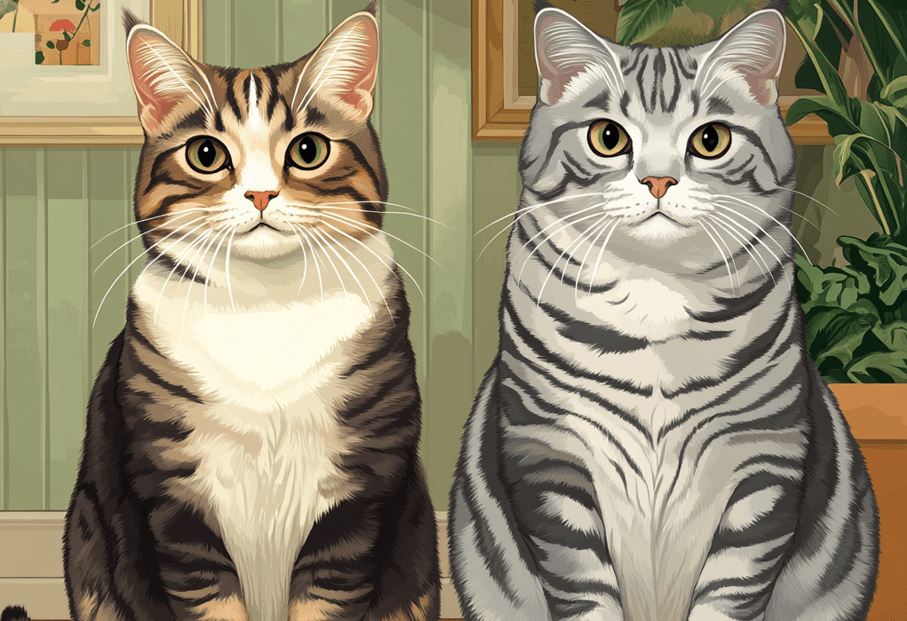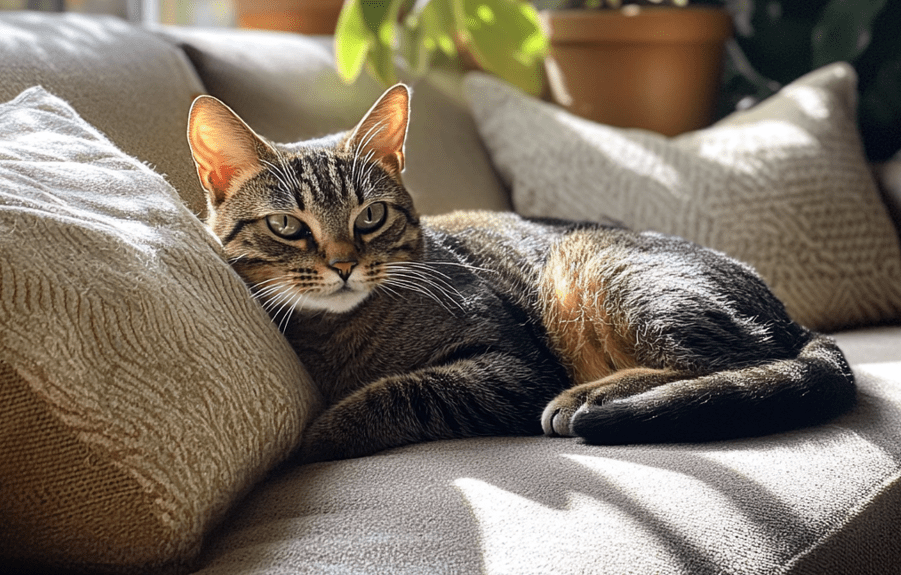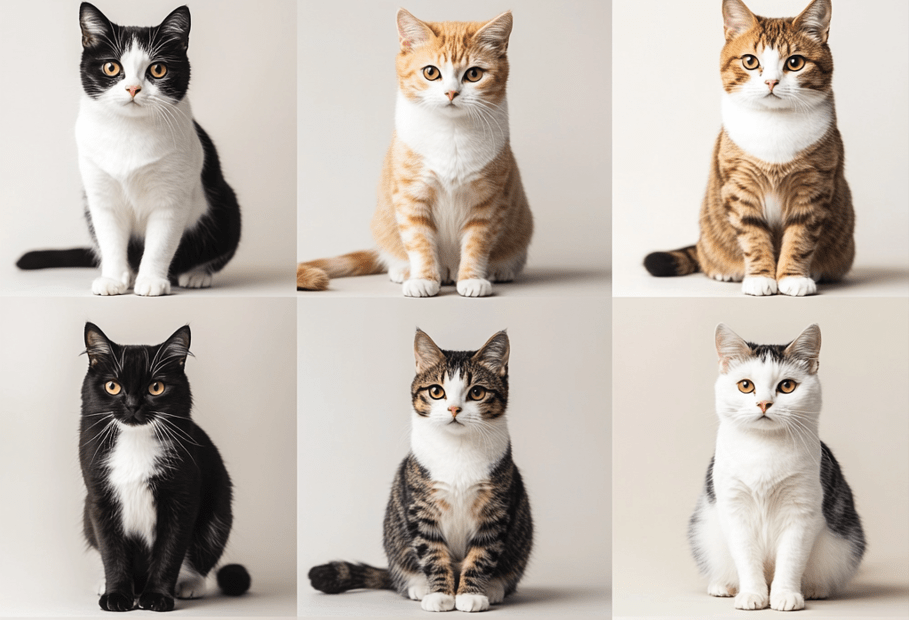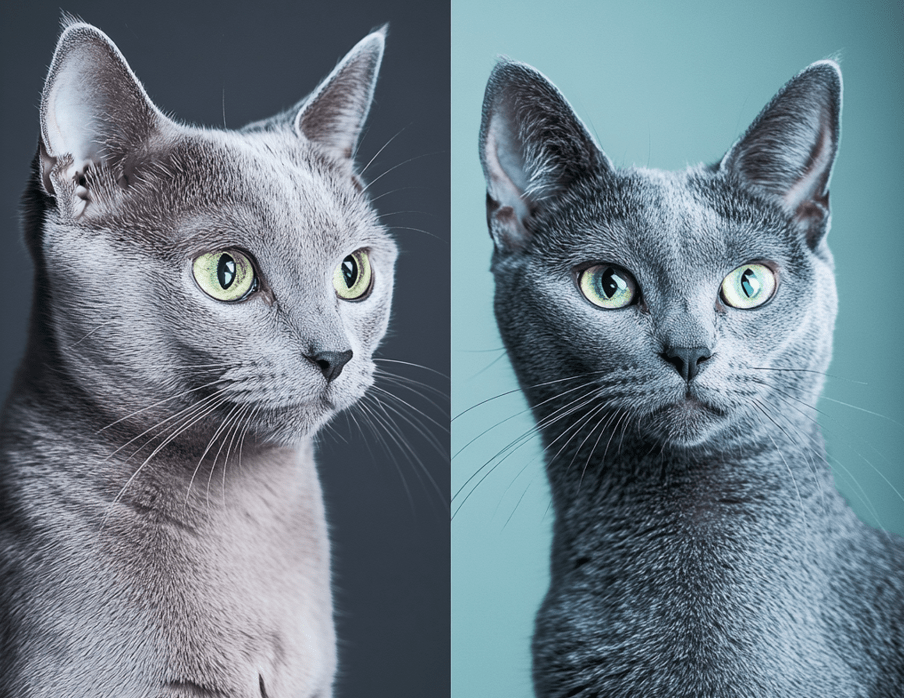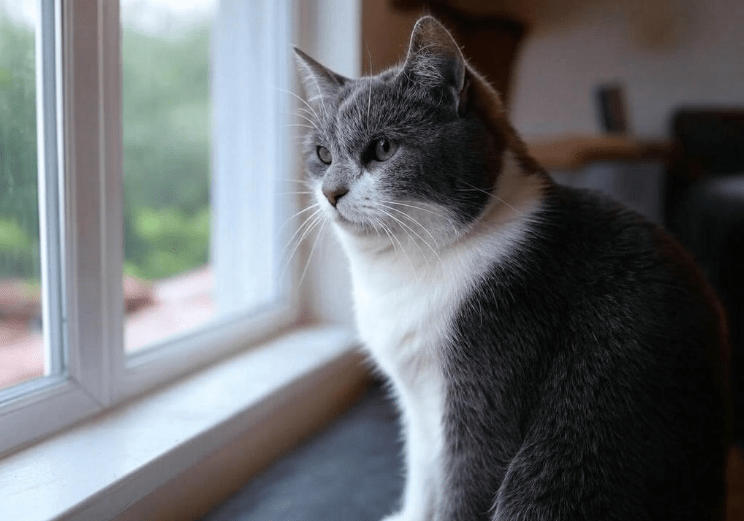
If you’ve noticed your Domestic Shorthair paws at windows, you’re not alone. This common feline behavior can be puzzling for cat owners, leaving you wondering what’s driving your pet to tap, scratch, or press against the glass. Whether it’s a reaction to birds outside, a desire to explore, or something else entirely, this behavior is rooted in your cat’s instincts and environment. In this comprehensive guide, we’ll explore the reasons behind why Domestic Shorthairs paw at windows, what it means, and how to manage or redirect this behavior effectively.
Understanding the Domestic Shorthair Breed
Domestic Shorthairs are one of the most popular cat breeds, known for their diverse coat colors, playful personalities, and adaptability. These mixed-breed cats are not defined by a specific pedigree but share common traits like curiosity, intelligence, and a strong hunting instinct. Their natural behaviors, including when a Domestic Shorthair paws at windows, often reflect their ancestral roots as skilled hunters and explorers.
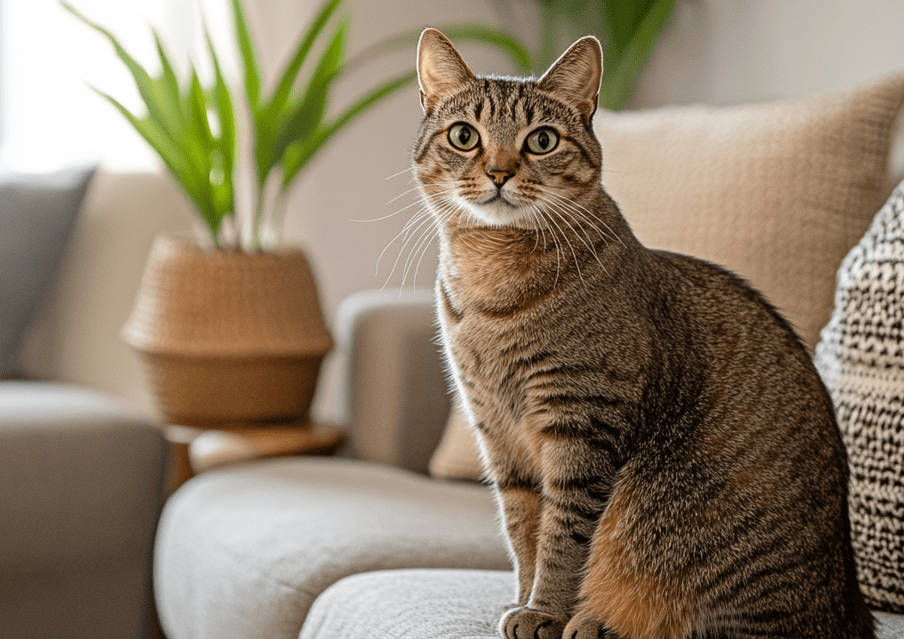
Pawing at windows is a behavior that can serve multiple purposes, from communication to stimulation. By understanding the underlying causes, you can better address your cat’s needs and create a harmonious home environment.
Why Does Your Domestic Shorthair Paw at Windows?
There are several reasons why your Domestic Shorthair paws at windows. Each motivation provides insight into your cat’s emotional and physical state. Below are the most common causes, supported by feline behavior research and expert insights.
1. Hunting Instincts and Prey Drive
Domestic Shorthairs have a strong predatory instinct, even if they’re indoor cats. When they see birds, squirrels, or insects outside the window, their hunting drive kicks in. Pawing at the glass is an attempt to “catch” the prey they see.
What It Looks Like: Rapid pawing, chattering teeth, or a crouched posture while staring intently outside.
Why It Happens: The movement of animals or objects outside stimulates your cat’s natural desire to hunt. The window acts as a barrier, leading to frustration.
2. Curiosity and Exploration
Domestic Shorthairs are naturally curious creatures. Windows offer a front-row seat to the outside world, filled with new sights, sounds, and smells. Pawing at windows may be your cat’s way of investigating or expressing a desire to explore beyond the glass.
What It Looks Like: Gentle tapping or pressing paws against the window while looking outside.
Why It Happens: Your cat may be intrigued by changing weather, passing cars, or neighborhood activity.
3. Territorial Behavior
Cats are territorial by nature, and windows can serve as a boundary between their indoor domain and the outside world. If your Domestic Shorthair paws at windows, they may be reacting to perceived threats, such as stray cats, dogs, or unfamiliar people.
What It Looks Like: Aggressive pawing, hissing, or growling while staring at another animal or person outside.
Why It Happens: Your cat may feel the need to defend their territory from intruders they see through the window.
4. Seeking Attention
Some Domestic Shorthairs paw at windows to get their owner’s attention. If they notice that this behavior prompts a reaction from you, they may repeat it to engage with you or request playtime, food, or affection.
What It Looks Like: Pawing at the window while glancing at you or meowing.
Why It Happens: Cats are smart and learn which behaviors elicit responses from their owners.
5. Boredom or Lack of Stimulation
Indoor Domestic Shorthairs may paw at windows out of boredom, especially if they lack sufficient mental or physical stimulation. Windows provide a source of entertainment, but repetitive pawing can indicate that your cat needs more enrichment.
What It Looks Like: Persistent pawing at random times, even when nothing is visibly outside.
Why It Happens: Without enough toys, playtime, or environmental enrichment, your cat may turn to the window for stimulation.
6. Frustration or Stress
Pawing at windows can also be a sign of frustration or stress, particularly if your Domestic Shorthair is unable to act on their instincts (e.g., chasing a bird they see). This frustration can build up, leading to repetitive or intense pawing.
What It Looks Like: Vigorous scratching or pawing, accompanied by yowling or restless behavior.
Why It Happens: The inability to access the outdoors or interact with stimuli can cause stress in some cats.
7. Reflection or Visual Stimulation
In some cases, your Domestic Shorthair may be pawing at their own reflection in the window, especially at night when the glass becomes more reflective. They might mistake their reflection for another cat or simply be intrigued by the movement.
What It Looks Like: Pawing at the window at night or in low-light conditions, often with a playful demeanor.
Why It Happens: Reflections can mimic the movement of another animal, sparking curiosity or playfulness.
What Does It Mean When Your Domestic Shorthair Paws at Windows?
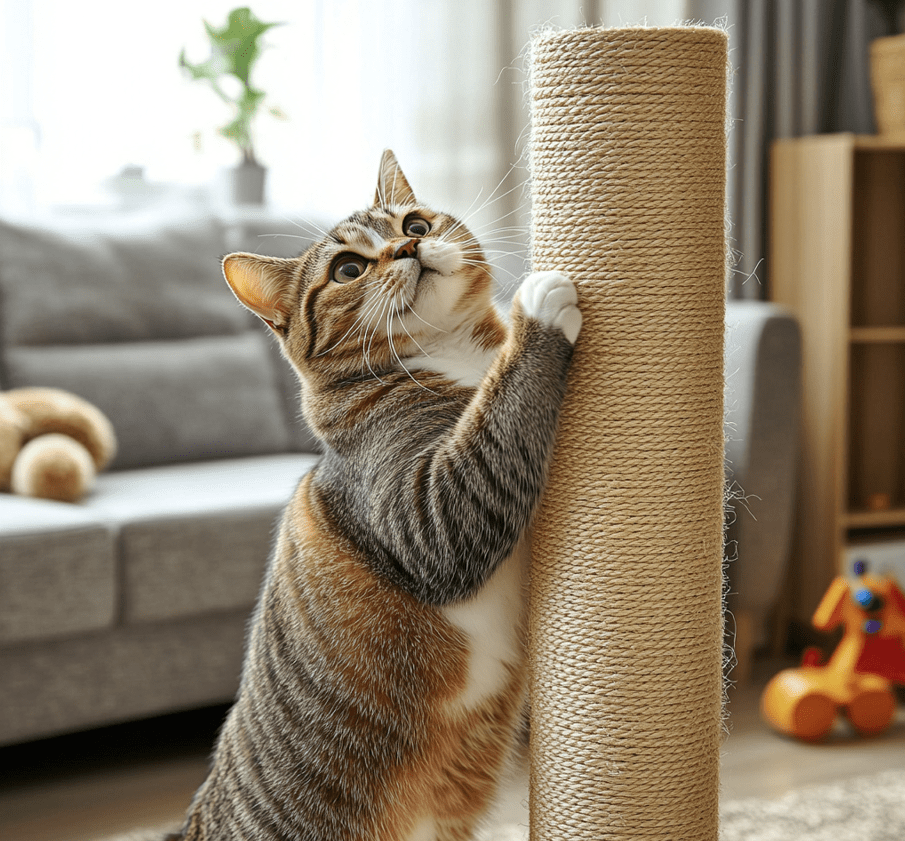
The act of a Domestic Shorthair pawing at windows can carry different meanings depending on the context. Here’s a breakdown of what your cat might be communicating:
“I want to hunt!”: Pawing driven by prey drive indicates your cat is healthy and engaged with their environment, but it may also signal a need for more play that mimics hunting.
“I’m curious!”: Gentle pawing suggests your cat is simply exploring their surroundings, a sign of a mentally active feline.
“This is my territory!”: Aggressive pawing could mean your cat feels threatened and is asserting dominance over their space.
“Pay attention to me!”: If your cat paws while looking at you, they’re likely seeking interaction or signaling a need (e.g., food, play).
“I’m bored or stressed!”: Repetitive or intense pawing may indicate a lack of stimulation or underlying stress that needs addressing.
Understanding the specific meaning behind your cat’s behavior requires observing their body language, the timing of the pawing, and what’s happening outside the window.
How to Manage or Redirect Pawing Behavior
While it’s normal for a Domestic Shorthair to paw at windows, excessive or destructive pawing may require intervention. Here are practical, cat-friendly strategies to manage or redirect this behavior while keeping your feline happy and healthy.
1. Provide Enrichment to Satisfy Hunting Instincts
To channel your Domestic Shorthair’s prey drive, offer toys and activities that mimic hunting.
Interactive Toys: Feather wands, laser pointers, or toy mice engage your cat’s hunting instincts.
Puzzle Feeders: These stimulate your cat’s mind and provide a rewarding challenge.
Window Perches: Install a window perch so your cat can observe outside comfortably without pawing.
2. Create a Stimulating Indoor Environment
A rich indoor environment reduces boredom and the urge to paw at windows excessively.
Cat Trees and Shelves: Vertical spaces allow your cat to climb and explore.
Scratching Posts: Provide multiple scratching surfaces to redirect scratching from windowsills.
Rotating Toys: Introduce new toys periodically to keep your cat engaged.
3. Block or Modify Window Access
If pawing is caused by specific triggers (e.g., stray cats or birds), consider modifying your cat’s window access.
Window Film or Blinds: Apply frosted window film or partially close blinds to reduce visibility of outdoor stimuli.
Bird Feeders: Move bird feeders away from windows to minimize prey drive triggers.
Feliway Diffusers: Use pheromone diffusers to calm your cat if territorial stress is an issue.
4. Engage in Regular Playtime
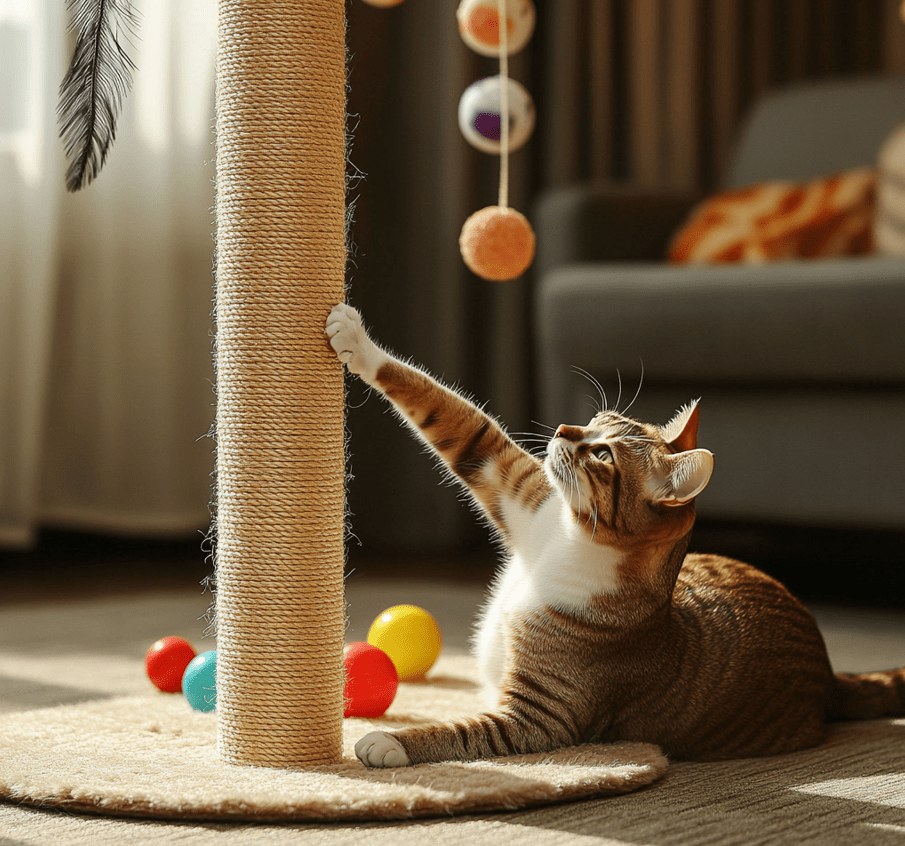
Daily play sessions help burn off energy and reduce attention-seeking or boredom-related pawing.
Schedule Playtime: Dedicate 15–20 minutes twice a day to interactive play.
Mimic Prey Movement: Move toys in ways that imitate birds or small animals to satisfy your cat’s instincts.
5. Address Territorial Triggers
If your Domestic Shorthair is pawing due to territorial behavior, take steps to reduce perceived threats.
Deter Stray Cats: Use motion-activated sprinklers or ultrasonic deterrents to keep stray cats away from your property.
Spay/Neuter: Ensure your cat is spayed or neutered to reduce territorial instincts.
Consult a Behaviorist: For persistent territorial aggression, a feline behaviorist can offer tailored solutions.
6. Rule Out Medical Issues
In rare cases, pawing at windows could be linked to medical issues, such as pain, neurological problems, or vision changes.
Veterinary Checkup: Schedule a vet visit to rule out health concerns, especially if the behavior is sudden or accompanied by other symptoms (e.g., lethargy, appetite changes).
7. Use Positive Reinforcement
Reward your Domestic Shorthair for desired behaviors to discourage excessive pawing.
Treats and Praise: Offer treats or affection when your cat uses a scratching post or plays with toys instead of pawing at windows.
Avoid Punishment: Yelling or scolding can increase stress and worsen the behavior.
Preventing Excessive Pawing in Domestic Shorthairs
Prevention is key to minimizing problematic pawing behavior. Here are proactive steps to keep your Domestic Shorthair content and less focused on windows:
Early Enrichment: Provide toys, perches, and play opportunities from kittenhood to establish healthy habits.
Consistent Routine: Maintain regular feeding, play, and litter box cleaning schedules to reduce stress.
Socialization: Expose your cat to various stimuli early on to build confidence and reduce territorial reactions.
Ample Resources: Ensure your home has enough scratching posts, toys, and resting spots to prevent boredom.
Common Myths About Domestic Shorthairs Pawing at Windows
Let’s debunk some misconceptions about this behavior to provide clarity for cat owners:
Myth 1: Pawing at Windows Means Your Cat Wants to Go Outside
While some cats may want to explore outdoors, pawing is often driven by curiosity, prey drive, or territorial instincts, not necessarily a desire to leave the house.
Myth 2: Only Outdoor Cats Paw at Windows
Indoor Domestic Shorthairs are just as likely to paw at windows due to their natural instincts and the stimulation provided by the outside world.
Myth 3: Pawing Is Always a Problem
Occasional pawing is normal and healthy. It only becomes an issue if it’s excessive, destructive, or linked to stress.
Conclusion

When your Domestic Shorthair paws at windows, it’s a window into their instincts, emotions, and environment. Whether driven by hunting instincts, curiosity, territorial behavior, or boredom, this behavior is a natural part of being a cat. By understanding the reasons behind it and implementing strategies like enrichment, playtime, and environmental modifications, you can manage or redirect pawing effectively.
With the right approach, you can keep your Domestic Shorthair happy, engaged, and free from stress while protecting your windows and home. If the behavior persists or escalates, don’t hesitate to seek guidance from a veterinarian or feline behaviorist. By addressing your cat’s needs thoughtfully, you’ll strengthen your bond and create a joyful, harmonious life together.

